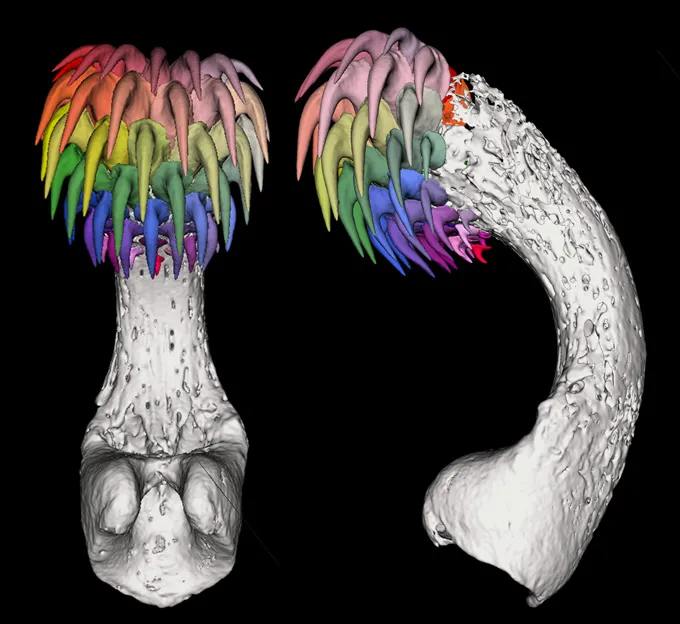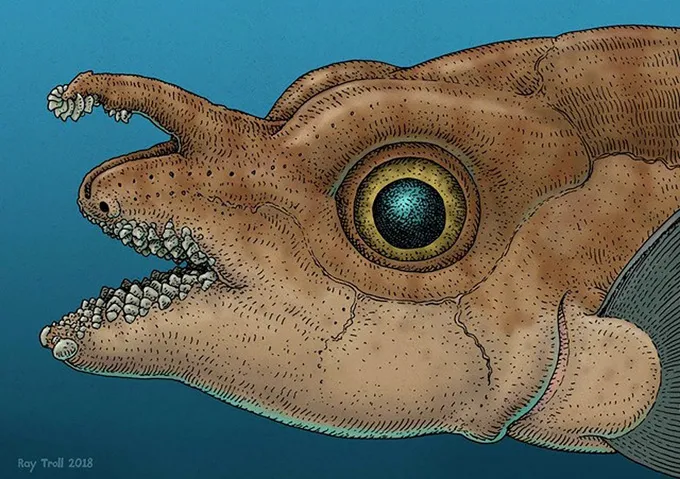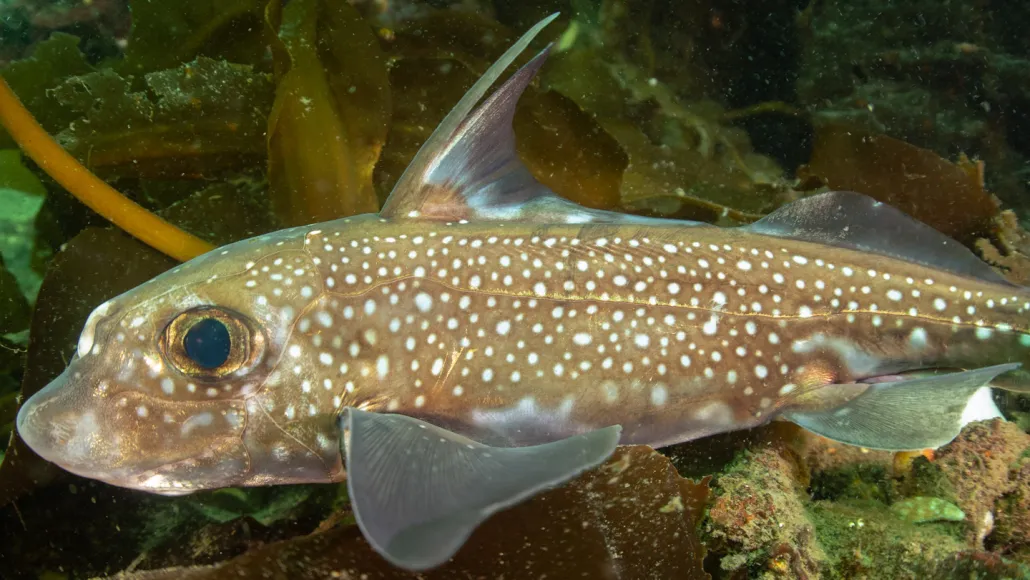Some male ghost sharks have a truly haunting way of showing affection — they use teeth that grow out of their foreheads.
These strange creatures, known as spotted ratfish, use these forehead teeth to latch onto females during mating. The teeth emerge from a fleshy, fingerlike projection between the sharks’ eyes — a spot where no one expected to find anything resembling dental structures, explains Karly Cohen, a biologist at the University of Washington’s Friday Harbor Laboratories.

Unlike normal teeth, which sprout from the jaw, the ratfish’s teeth curve out like tiny claws from a structure called a tenaculum. Cohen and her team describe the discovery — the first confirmed case of true teeth outside a vertebrate’s mouth — in a September 4 Proceedings of the National Academy of Sciences paper.
“It’s remarkable to find real teeth in such an unexpected place,” Cohen said. Until now, scientists believed that teeth evolved exclusively inside the mouths of vertebrates.
Spotted ratfish (Hydrolagus colliei) have long fascinated researchers with their ghostlike appearance. They glide through deep waters using wide, winglike fins, and their smooth, shimmering bodies lack the sandpaper texture of sharks. The males’ odd, spiky forehead structure puzzled scientists for decades — many assumed it was a leftover feature from ancient ancestors.

But using 3D imaging, Cohen’s team discovered that the spikes are in fact true teeth, formed from the same tissue and governed by the same genes that produce teeth in the mouth. Fossil evidence even suggests that prehistoric relatives of today’s ratfish had similar forehead dentition.
These mysterious fish live at depths of around 1,000 meters but venture into shallower waters like Washington’s Puget Sound to breed — providing rare opportunities for scientists to study them.
Cohen suspects that ghost sharks aren’t alone in this odd adaptation. “If we start looking for teeth in unexpected places,” she says, “we might find that nature’s been hiding them in plain sight all along.”
